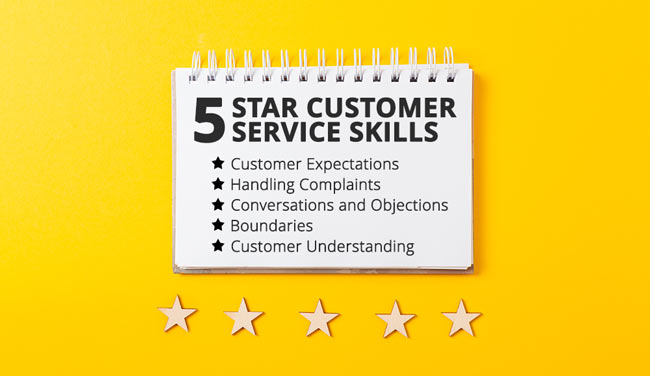30th October 2024

Want to raise service standards in your contact centre, but don’t know where to focus your efforts for the best results?
Pierre Bauzee, Founder of Beyond Satisfaction, explains all – as he delves into the key skills your people should be trained on to deliver an exceptional experience, time after time.
When it comes to managing expectations, your team can only do it effectively if they understand why they are doing it.
Here are some reasons you should definitely share with your team, so they have the correct mindset when it comes to this key topic:
Now we’ve covered the “why” (so your people have the correct mindset), let’s cover the “what” (how to get your people to effectively manage your customers’ expectations).
Here are 5 stages to successfully manage your customers’ expectations:
Dealing successfully with complaints is all about perspective. The minute we change our perspective around complaining customers, we change our approach to complaints.
Did you know you can turn a complaint into one of the best ways to show genuine care, generate even more trust from customers, or give your team another opportunity to set boundaries or re-manage expectations?
But there is one main thing which makes a huge difference when it comes to complaints handling: making the best impact on your customers’ emotional perception!
Science tells us that human reactions and decision-making processes are emotional first and then logical. So, when we decide to resolve a situation with logic alone, without considering and acknowledging first its emotional origin, it is a recipe for failure.
So, let’s take the 3 key stages of successful complaints handling, which are:
The reason you want your team to focus on these 3 stages before even thinking of finding a solution is that, by doing so, they will positively acknowledge and show care towards the customer’s perspective.
This will make a positive impact on their emotional perception, so you can turn the situation into an opportunity rather than a threat. Only once your team has successfully done this can the complaint be effectively resolved.
If you are looking for more advice on handling customer complaints, read our article: Customer Complaints? Try This 10-Point Plan
Let’s start by asking ourselves what is a courageous conversation?
A courageous conversation is a conversation you have with a customer on a disagreement. The aim of these conversations is to stand your ground diplomatically – without making it conflictual.
So how do you do this? You need to make their needs the reason behind your argument, so they are more likely to agree with you.
For instance, if a customer has unrealistic deadlines, your team can make it about the fact that only with your deadline will they get the full value from what you are providing.
But one of the best ways to become a master in courageous conversations is to be prepared before having them.
Here are some powerful steps your team needs to follow to effectively do so:
And what about objections handling?
Well, it is first crucial to understand that objection handling is not necessarily about sales objections, but also the objections you get in general when dealing with your customers. It works amazingly well for both sales AND customer service.
Here is the roadmap to successful objection handling:
For more advice on managing customer objections, read our article: Handling Sales Objections Over The Telephone
Effectively setting boundaries with challenging customers definitely starts with knowing your own limits as a business and as a team. And the best way to do this is to get your team to ask themselves the correct questions.
Having a list of questions that your people can ask themselves when facing these kinds of clients is crucial to set your limits accordingly as a business. It will also help you find the most important piece of information: why these clients are like this.
Last but definitely not least, it is also about getting your people to understand what those limits are. As only with clarity around your boundaries can your people be consistent in effectively setting them.
So, let’s see some questions your people can ask themselves:
And here are some key things your team needs to know:
Regarding this last point, learning to say no to your clients is key, and the “no-why-but” approach is definitely a key method to effectively do so.
With this approach, you are indeed saying no without properly saying it (“unfortunately, this is not something we can do….”) while explaining the reason behind it (by making it about their needs) and giving them an alternative solution wherever possible.
Understanding your customers’ perspective on a regular basis definitely starts with having the correct mindset:
As every situation is different, what should your people look for in order to understand that perspective effectively?
Here are some key perspectives your team should look to understand when dealing with customers:
For the steps you need to take to better understand every customer, read our article: 3 Steps to Better Understanding Your Customers

Never forget, you can have the best methods in place, but great customer service starts with a team feeling proud, empowered and acknowledged when it comes to successfully delivering it.
So, when it comes to the best customer service skills and methods your team really need, the first thing to understand is that they can only apply these methods effectively if they feel empowered and important in their role.
Written by: Pierre Bauzee, Founder of Beyond Satisfaction
We have more great articles on vital customer service skills, so you should read these articles next:
Reviewed by: Megan Jones